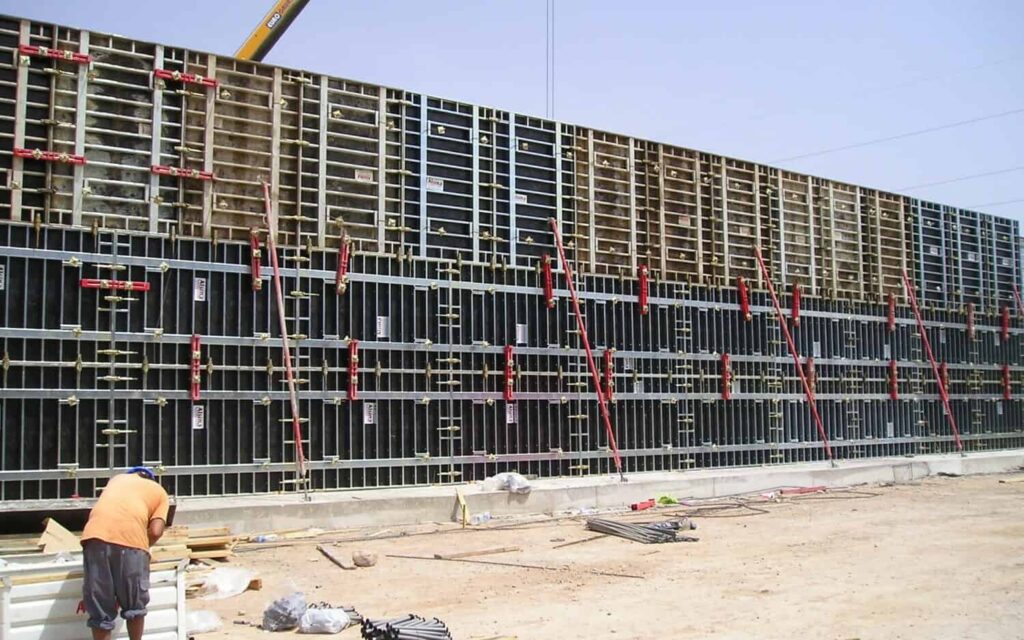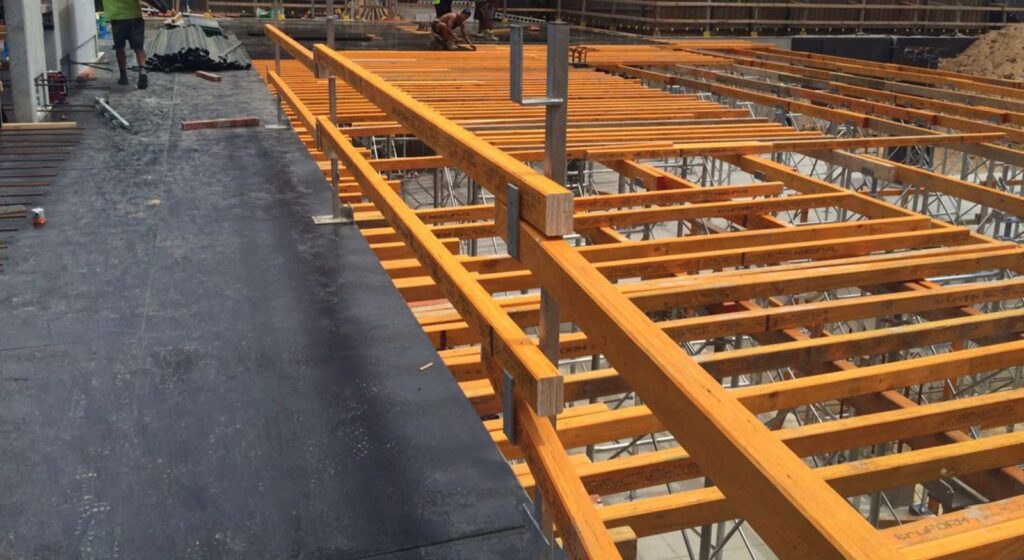LVL Formwork is a widely used construction technique that offers numerous benefits for builders. In this comprehensive guide, we will explore the various aspects of LVL Formwork, including its definition, components, benefits, installation process, and maintenance and safety measures. By understanding the fundamentals of LVL Formwork, builders can make informed decisions and achieve successful construction projects.
Understanding LVL Formwork
Definition and Basics of LVL Formwork
LVL Formwork, or laminated veneer lumber formwork, refers to the use of engineered wood panels in creating temporary molds for casting concrete structures. These molds, commonly referred to as formwork, provide the necessary support and shape during the pouring and curing of concrete. LVL Formwork is known for its high strength, dimensional stability, and versatility, making it an excellent choice for various construction applications.
When it comes to the composition of LVL Formwork, it is typically made by bonding together thin wood veneers with adhesives to form a strong and durable panel. This manufacturing process enhances the structural integrity of the formwork, ensuring that it can withstand the pressures exerted during concrete placement and curing. The use of LVL Formwork also contributes to sustainable construction practices, as it is often produced from fast-growing and renewable wood species.
The Importance of LVL Formwork in Construction
The use of LVL Formwork plays a vital role in ensuring the structural integrity and overall quality of concrete constructions. It provides a solid foundation for pouring concrete and helps in achieving accurate dimensions and smooth finishes. Additionally, LVL Formwork enhances the efficiency of construction processes, allowing for faster project completion and reduced labor costs.
Moreover, LVL Formwork offers advantages in terms of reusability, as the panels can be used multiple times, providing cost savings and reducing waste on construction sites. The dimensional stability of LVL Formwork also helps in minimizing the risk of concrete surface defects, ensuring a high-quality finish for the completed structure. Overall, the use of LVL Formwork not only improves the construction process but also contributes to the durability and sustainability of concrete buildings and infrastructure.

Components of LVL Formwork
Materials Used in LVL Formwork
LVL Formwork primarily consists of laminated veneer lumber panels, which are created by bonding multiple layers of thin wood veneers with a strong adhesive. These veneers are usually made from high-quality softwood, such as spruce or pine, chosen for its strength and stability. The panels are then cut into various sizes and shapes to suit different formwork requirements.
In addition to the laminated veneer lumber panels, other essential materials used in LVL formwork include supporting beams, wedges, and connecting hardware. The supporting beams provide structural stability to the formwork system, ensuring that it can withstand the weight of the concrete and any additional loads. Wedges are used to secure the formwork in place and make adjustments as needed, while connecting hardware such as bolts and clamps help to join the formwork components securely.
Design and Structure of LVL Formwork
The design and structure of LVL Formwork are critical for achieving optimal performance and durability. The panels are typically designed to withstand the pressure exerted by the fresh concrete, ensuring that they do not deform or fail during the pouring and curing process. Additionally, the formwork design should consider factors such as load distribution, support requirements, and ease of installation and removal.
Furthermore, the joints between formwork panels are carefully engineered to prevent leakage of concrete and ensure smooth finishing of the final structure. Proper alignment and bracing of the formwork are essential to maintain the desired shape and dimensions of the concrete elements being formed. Engineers and construction professionals meticulously plan the design and layout of the LVL formwork to meet specific project requirements and ensure the quality of the final concrete structure.
Benefits of Using LVL Formwork
Durability and Strength of LVL Formwork
One of the primary advantages of LVL Formwork is its exceptional strength and durability. The engineered wood panels offer high load-bearing capacity, making them suitable for supporting heavy concrete structures. Moreover, LVL Formwork resists warping, twisting, and shrinkage, ensuring long-lasting performance even in challenging construction environments.
Furthermore, the manufacturing process of LVL Formwork involves bonding together multiple layers of wood veneers with adhesives under high pressure and heat. This meticulous process results in a uniform and stable material that exhibits consistent strength and structural integrity across its entire surface. As a result, LVL Formwork provides reliable support for concrete placement, ensuring the stability and safety of construction projects. Read more about integrity on https://ethicsunwrapped.utexas.edu/glossary/integrity
Cost-Effectiveness of LVL Formwork
Using LVL Formwork can significantly contribute to cost savings in construction projects. The reusability of LVL panels allows builders to use them for multiple pours, reducing the need for frequent material replacements. Additionally, LVL Formwork facilitates faster construction processes, minimizing labor costs and overall project duration.
Moreover, the smooth surface of LVL Formwork panels helps achieve a high-quality concrete finish, eliminating the need for additional finishing work. This not only saves time but also reduces the requirement for extra materials and labor, further enhancing the cost-effectiveness of using LVL Formwork in construction projects.
Installation Process of LVL Formwork
Pre-Installation Considerations
Prior to installing LVL Formwork, builders must carefully plan and prepare the construction site. This involves assessing the formwork requirements, determining the optimal panel sizes and quantities, and ensuring proper alignment and leveling. It is essential to consult the project specifications and engineering drawings to ensure compliance with structural requirements.
Additionally, it is crucial to consider the environmental factors that may affect the formwork, such as wind loads, temperature variations, and exposure to moisture. Proper precautions should be taken to protect the formwork from these elements to ensure its durability and stability throughout the construction process.
Step-by-Step Guide to Installing LVL Formwork
- Prepare the foundation by leveling the ground and compacting the soil.
- Place the first row of LVL panels around the perimeter of the concrete structure, ensuring proper alignment and anchoring.
- Assemble additional LVL panels vertically, securing them with appropriate connectors or fasteners.
- Install horizontal bracing to provide stability and prevent formwork movement during concrete pouring.
- Check the alignment and levelness of the formwork system, making necessary adjustments as required.
- Install necessary accessories, such as chamfer strips or blockouts, to achieve desired architectural details.
- Inspect the entire formwork system for any defects or deficiencies before proceeding with concrete pouring.
Furthermore, it is important to consider the safety measures that need to be implemented during the installation of LVL Formwork. This includes providing adequate personal protective equipment for workers, ensuring proper training on formwork assembly, and establishing clear communication channels to address any safety concerns that may arise on the construction site.

Maintenance and Safety Measures for LVL Formwork
Regular Maintenance Practices
To ensure the longevity and effectiveness of LVL Formwork, builders should implement regular maintenance practices. This includes inspecting the panels for damages or signs of wear, replacing any defective components, and properly cleaning and storing the formwork after use. Additionally, builders should follow manufacturer recommendations regarding maintenance intervals and procedures. Click here to find more about damages.
Regular maintenance is essential for preserving the structural integrity of LVL Formwork. By conducting thorough inspections, builders can identify any potential issues before they escalate into major problems. This proactive approach not only saves time and money but also ensures the safety of workers on the construction site.
Safety Guidelines for Using LVL Formwork
- Provide adequate personal protective equipment (PPE) to all workers involved in formwork installation and dismantling.
- Erect appropriate safety barriers or guardrails around elevated formwork platforms to prevent falls.
- Ensure proper training and supervision of workers to promote safe handling and installation of LVL Formwork.
- Regularly inspect and secure formwork connections to prevent accidental dislodging or collapse.
- Adhere to local building codes and regulations regarding formwork design, installation, and safety measures.
While following maintenance practices is crucial, it is equally important to prioritize safety when working with LVL Formwork. By implementing the following safety guidelines, builders can minimize the risk of accidents and injuries:
- Provide comprehensive training to all workers involved in formwork installation and dismantling. This includes educating them on the proper use of personal protective equipment (PPE) and the importance of following safety protocols.
- Regularly conduct safety inspections to identify any potential hazards or deficiencies in the formwork system. This includes checking for loose connections, damaged components, or any signs of instability.
- Ensure that all workers have access to appropriate safety equipment, such as harnesses, helmets, and safety shoes. This equipment should be regularly inspected and replaced if damaged.
- Establish clear communication channels between workers and supervisors to address any safety concerns or issues promptly.
By following these maintenance and safety measures, builders can maximize the lifespan of LVL Formwork while ensuring a safe working environment for all construction personnel.In conclusion, LVL Formwork offers numerous advantages for builders, making it a popular choice in the construction industry. Understanding the basics of LVL Formwork, including its components, benefits, installation process, and maintenance and safety measures, is crucial for successful construction projects. By utilizing this comprehensive guide, builders can harness the potential of LVL Formwork to achieve efficient, cost-effective, and durable concrete structures.
More read: The Benefits of Using Formwork LVL in Construction Projects

